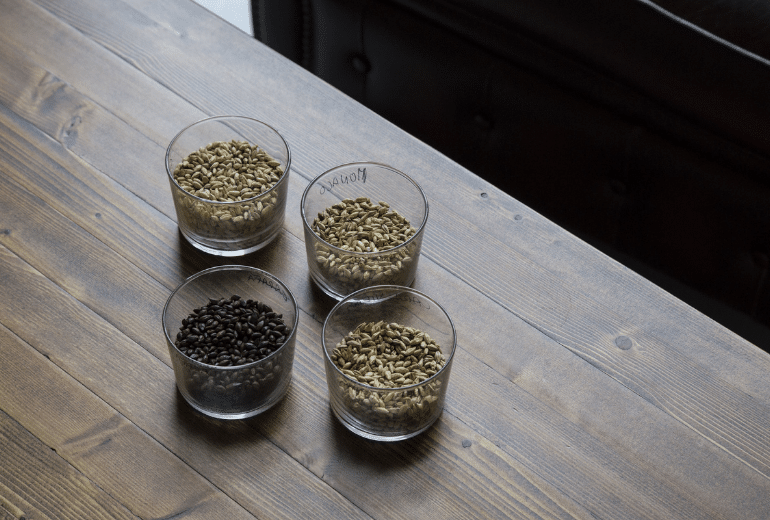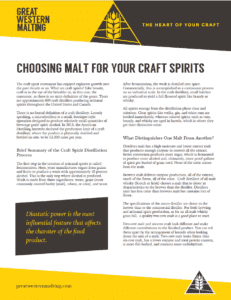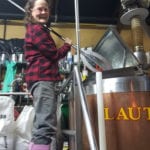Choosing Malt for Your Craft Spirits
The craft spirit movement has enjoyed explosive growth over the past decade or so. What are craft spirits? Like beauty, craft is in the eye of the beholder or, in this case, the consumer, as there is no strict definition of the genre. There are approximately 600 craft distillers producing artisanal spirits throughout the United States and Canada.
There is no formal definition of a craft distillery. Loosely speaking, a microdistillery is a small, boutique-style operation designed to produce relatively small quantities of beverage grade spirit alcohol. In 2013, the American Distilling Institute declared the production limit of a craft distillery, where the product is physically distilled and bottled on site, to be 52,000 cases per year.
Brief Summary of the Craft Spirit Distillation Process
The first step in the creation of artisanal spirits is called fermentation. Here, yeast consumes sugars from grains and fruits to produce a wash with approximately 10 percent alcohol. This is the only step where alcohol is produced.
After fermentation, the wash is distilled into spirit. Commercially, this is accomplished in a continuous process on an industrial scale. In the craft distillery, small batches are produced to yield a full-flavored spirit like brandy or whiskey.
All spirits emerge from the distillation phase clear and colorless. Clear spirits like vodka, gin, and white rum are bottled immediately, whereas colored spirits such as rum, brandy, and whisky are aged in barrels, which is where they get their distinctive color.
What Distinguishes One Malt From Another?
North American Distillers malt has a very high enzyme package to be able to convert all the available starch. Better conversion produces more sugar, which is fermented to produce more alcohol and, ultimately, more proof gallons of spirit per bushel of grain used. None of the color comes from the malt.
Brewers malt delivers adequate enzyme production, large extract, much of the flavor, all of the color. Craft distillers of all malt whisky choose a malt that is closer in characteristics to brewers than to North American distillers. Pot Still type Distillers malt a much lower color than typical brewers malt while retaining a significant flavor profile.
The needs of the micro all-malt whiskey distiller are closer to that of a brewer than to the large commercial distiller. For both brewing and artisanal spirit production, typically begin with a quality two-row malt.
Two-row malt and six-row malt look different and make different contributions to the finished product. You can tell them apart by the arrangement of kernels when looking down the axis of a stalk. Two-row malt looks flatter than six-row malt, has a lower enzyme and total protein content, is more full-bodied, and contains more carbohydrate.
Another way of speaking of malt is to distinguish between barley malt and gibberellic acid malt. Gibb malt, preferred by bourbon producers, contains more alpha amylase than barley malt. Bourbon makers also use different proportions of malt than other whisky makers, in that it must contain at least 51 percent corn. Scotch whisky, on the other hand, uses 100 percent roasted barley.
Factors Affecting the Choice of Malt
Craft distillers speak in terms of four features that all affect the character of the final product. These are moisture content, protein, extract yield dry basis fine grind (DBFG), and diastatic power. Of these, the most influential is diastatic power.
Malts with a moisture content above 6 percent are vulnerable to mold and, consequently, spoilage. Mashes made with a higher moisture content tend to be somewhat gummy. The lowest moisture content you will find is generally 3-4% by weight, such as that of British pale malts.
Since proteins are composed of nitrogen-containing amino acids, such as lysine, arginine, and histidine, the total nitrogen (TN) value on a malt analysis is a measure of protein content. The ratio of soluble to total nitrogen is an indication of the degree to which germination of the grain took place during the malting process.
The DBFG of a malt expresses the maximum yield of extract or sugars available for fermentation by the yeast. For a high-quality malt, look for a DBFG above 78%.
The diastatic power of a malt describes its enzyme activity, or its ability to convert starches in the grain into simple sugars during the mashing process. There are two diastase enzymes, alpha- and beta-amylase.
| |
Brewer |
Distiller |
| Moisture % |
Max 4.5 |
Max 6.5 |
| Protein % |
Max 12.5 |
Min 13 |
| DBFG % |
80 |
77 |
| Diastatic Power |
110-130 |
Min 240 |
Table 1: Differences in typical malt analysis between brewing and distilling
Malted barley is one of three key ingredients in craft spirits. Its purpose is to release sugars from the starches present in the cereal for the yeast to ferment into alcohol. The four most important characteristics in a craft malted whisky are its moisture and protein contents, yield of fermentable sugars, and diastatic power. Distillers will want to consider the malt specifications when choosing malt.







